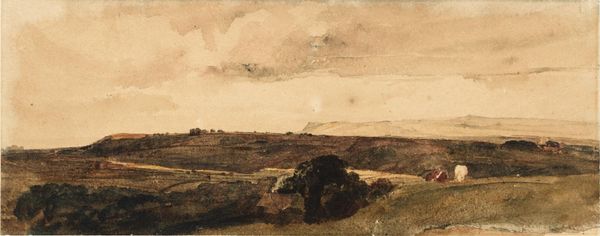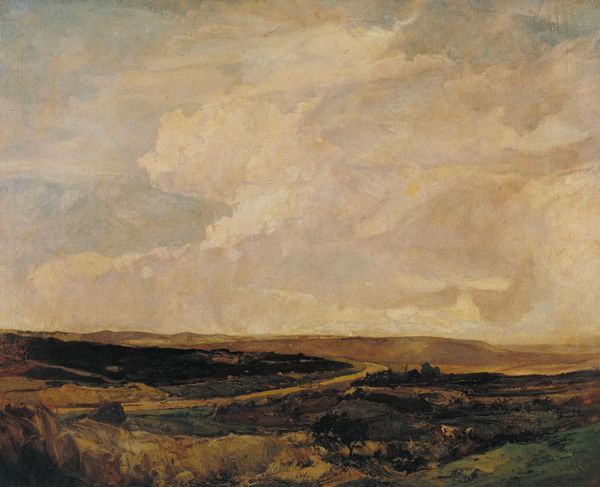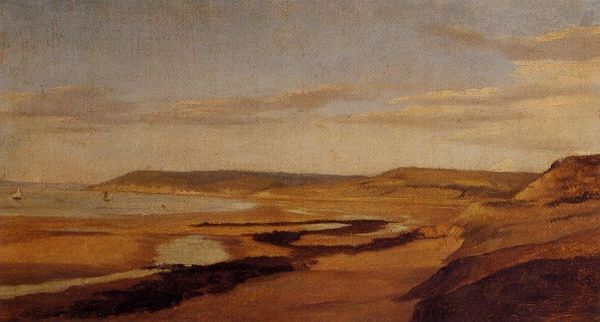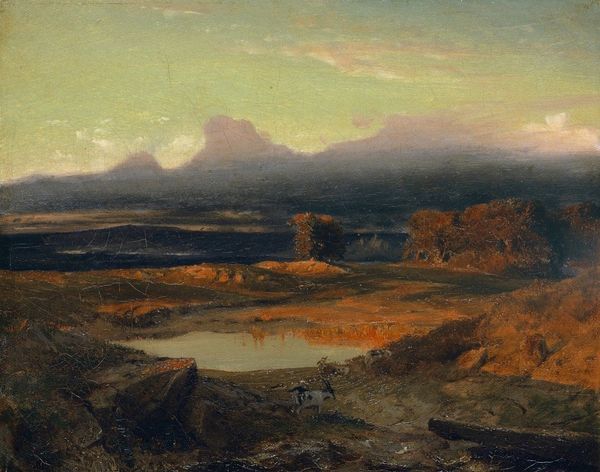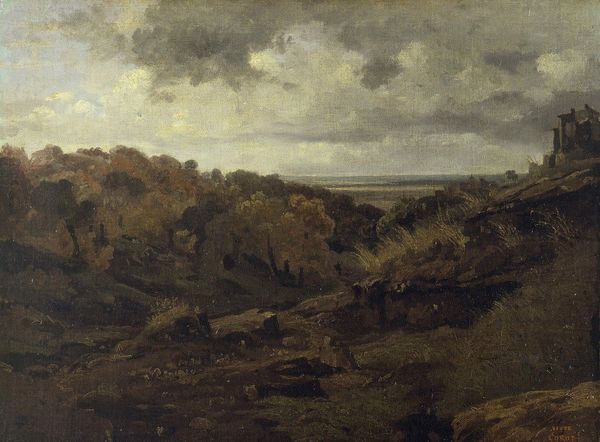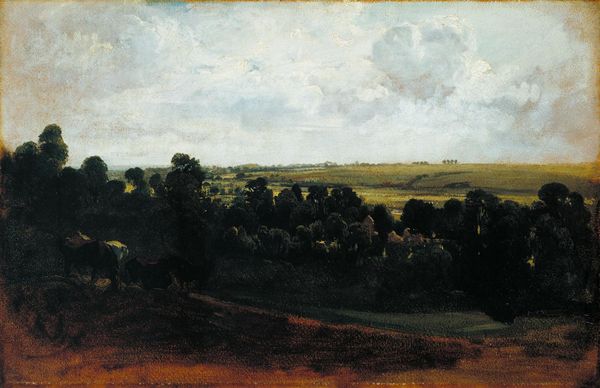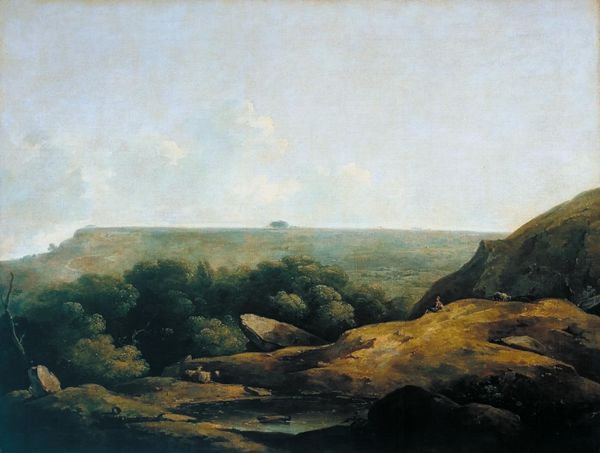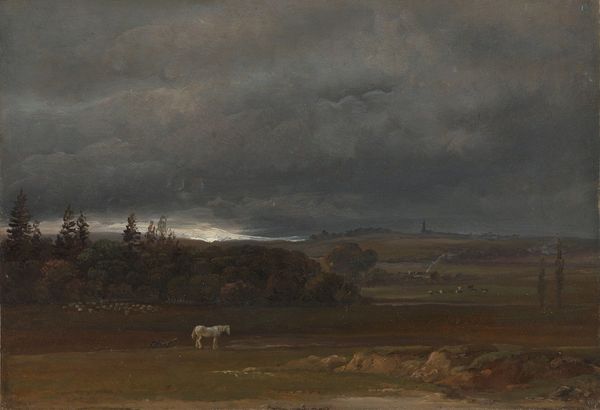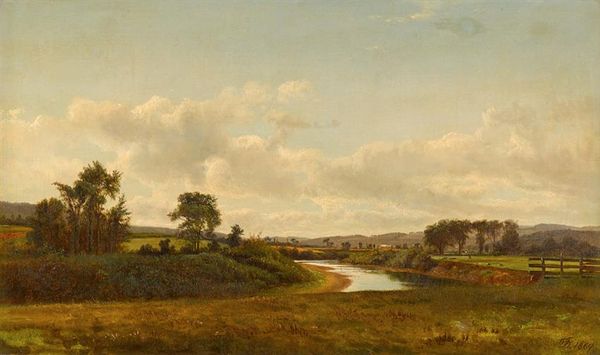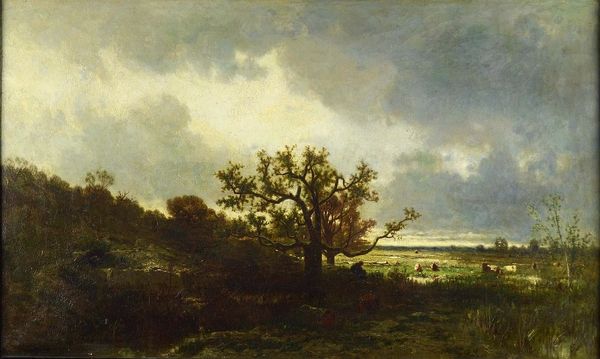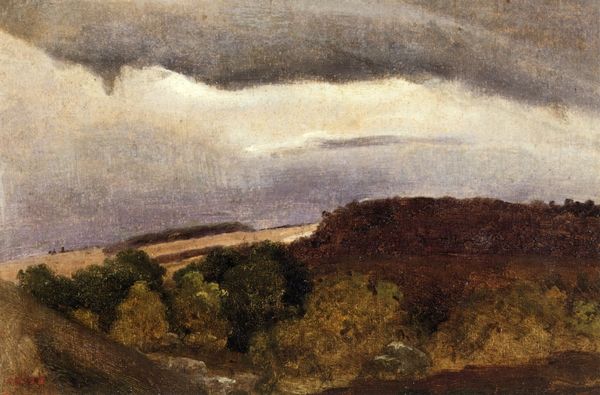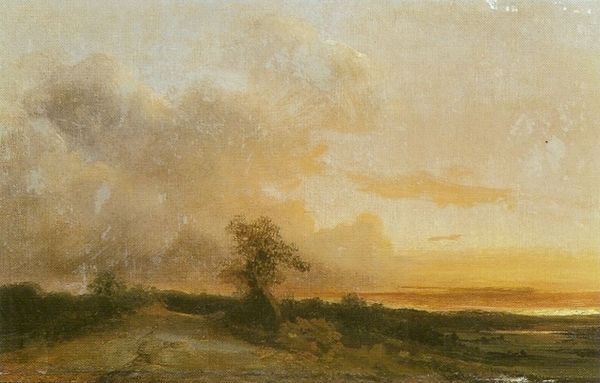
painting, plein-air, oil-paint
#
painting
#
plein-air
#
oil-paint
#
landscape
#
oil painting
#
romanticism
#
natural-landscape
#
cityscape
#
history-painting
#
trompe-l'oeil
#
realism
Dimensions: 23.3 x 44.7 cm
Copyright: Public domain
Curator: This landscape holds such a heavy, somber atmosphere... like a breath held tight before a storm. Editor: Precisely. What we're looking at is "The Roman Cammagna, with the Tiber" painted around 1828 by Camille Corot. He used oil paint, and it appears he painted it en plein air. The romantic impulse here, I find, offers a quiet reflection upon history. Curator: Absolutely, there's a tangible melancholy. But what draws me in is how it manages to make the epic intimate, even small, under that dramatic sky. Editor: And look at how he contrasts that moody sky with the details on the lower area of the painting! It's like Corot understood how landscapes function within social power dynamics. Rural landscapes have often been sites of labor exploitation and control. The lack of grandeur, that intimacy as you said, could subtly question romanticizing these spaces. Curator: Ah, that's an interesting read! To me, the muted palette feels more like memory. The way the Tiber winds into the distance evokes a feeling of time flowing and slipping away. It could be a landscape anywhere. Editor: Yes, though remember Rome wasn't just any landscape—it was at the core of Western civilization! By focusing on its rural outskirts rather than iconic monuments, perhaps Corot points towards an ambiguity of power. Where does Rome begin or end, and for whom? Curator: And yet he also flirts with that same kind of historic, monumental image-making, too. It makes you question what "historic" even means! Editor: Agreed. It is important to acknowledge that Rome has become a place where memories can reside – even the dark ones. Curator: Right? Ultimately, for me, it becomes a poignant contemplation on the beauty of passing moments and the stories whispered by the land. Editor: I appreciate how you focus on beauty within the darker undertones. For me, engaging with art is never merely an act of aesthetic consumption, but rather a moment where art catalyzes a more profound understanding of social and ecological awareness, urging viewers to think critically. Curator: See, that's what I love. Corot leaves the painting open for both of those reflections, it contains those memories as well as the open horizons to step towards it!
Comments
No comments
Be the first to comment and join the conversation on the ultimate creative platform.
